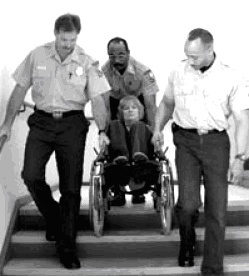Legal Overview
 Emergency Evacuation falls under various Federal and State legislation. For example, the Occupational Health and Safety Act 2004 (s.20) indicates that employers must eliminate risks to health and safety so far as is reasonably practicable; and if it is not reasonably practicable to eliminate risks to health and safety, to reduce those risks so far as is reasonably practicable.
Emergency Evacuation falls under various Federal and State legislation. For example, the Occupational Health and Safety Act 2004 (s.20) indicates that employers must eliminate risks to health and safety so far as is reasonably practicable; and if it is not reasonably practicable to eliminate risks to health and safety, to reduce those risks so far as is reasonably practicable.
The reasonably practicable definition looks at a) the likelihood of the hazard or risk concerned eventuating; the degree of harm that would result if the hazard or risk eventuated; what the person concerned knows, or ought reasonably to know; the availability and suitability of ways to eliminate or reduce the hazard or risk; the cost of eliminating or reducing the hazard or risk.
Government Authorities Advice Typically Is
 “Generally speaking if a person is physically disabled the procedure is to leave them in a safe place on the floor with another employee staying with them. If they then need to be physically evacuated from the building, the person is removed from the workplace by the fireman attending the premises. WorkSafe has some physically disabled persons and this is the procedure we adopt.
“Generally speaking if a person is physically disabled the procedure is to leave them in a safe place on the floor with another employee staying with them. If they then need to be physically evacuated from the building, the person is removed from the workplace by the fireman attending the premises. WorkSafe has some physically disabled persons and this is the procedure we adopt.
If it was decided by the Fireman that a disabled person was required to be moved from a particular level they, as part of their training, would move the disabled person to a safe level below the level the fire is on. There would generally not be a need to completely move the person out of the building entirely.”
This policy is dangerous for both the individual and the designated employee that has to stay with them. It is also Discriminatory as it treats an individual requiring assistance in evacuation “Less Favourably”
All organisations must meet both their Occupational Health and Safety Act and Disability Discrimination Act obligations in providing safe and equitable evacuation!

